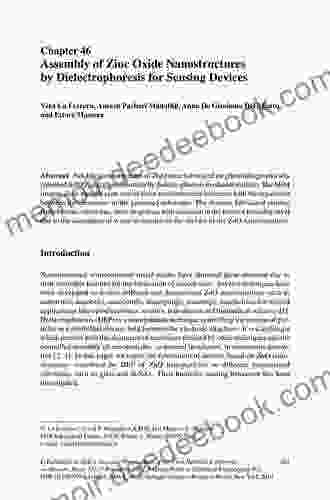Scales, Modes, Melodic Analysis, and Reharmonization: Exploring the Architecture of Harmony in Modern Music

Scales and Modes: The Building Blocks of Harmony
In the realm of music, scales and modes serve as the fundamental building blocks upon which melodies and harmonies are constructed. A scale is a series of notes arranged in ascending or descending order, while a mode is a specific arrangement of intervals within a scale that imparts a unique character. The most common scales used in Western music are the major and minor scales, each with its own distinct set of intervals.
* Major Scale: The major scale consists of a pattern of whole steps (W) and half steps (H),arranged as follows: W-W-H-W-W-W-H. This scale produces a bright and cheerful sound, making it a popular choice for melodies and harmonies in a wide range of musical genres. * Minor Scale: The minor scale has several variations, but the most common is the natural minor scale, which has a pattern of W-H-W-W-H-W-W. This scale creates a darker, more introspective sound, often used to evoke a sense of sadness or melancholy.
5 out of 5
| Language | : | English |
| File size | : | 5590 KB |
| Text-to-Speech | : | Enabled |
| Screen Reader | : | Supported |
| Enhanced typesetting | : | Enabled |
| Print length | : | 99 pages |
| Lending | : | Enabled |
Besides the major and minor scales, there are numerous other scales and modes that musicians employ to add variety and color to their compositions. These include pentatonic scales, blues scales, and the Lydian, Dorian, and Phrygian modes, among others. Each scale and mode possesses its own unique intervallic structure and imparts a distinctive flavor to the music.
Melodic Analysis: Deconstructing the Contour of Melodies
Melodic analysis involves examining the contour, shape, and movement of melodies. It seeks to understand how melodies develop over time, how they interact with the underlying harmony, and how they contribute to the overall musical narrative. Melodic analysis employs various techniques, such as:
* Contour Analysis: This focuses on the rise and fall of the melody, identifying its peaks and valleys. It helps determine the overall shape and direction of the melody. * Interval Analysis: By analyzing the intervals between adjacent notes, melodic analysis can reveal the composer's use of dissonance and consonance, and how these intervals create tension and resolution. * Ornamentation Analysis: This technique examines the use of embellishments, such as trills, grace notes, and turns, which add complexity and interest to the melody.
Melodic analysis is essential for understanding how melodies are constructed and how they interact with the underlying harmony. It provides insights into the composer's intentions and the overall structure of the music.
Reharmonization: Transforming the Harmonic Landscape
Reharmonization is the art of altering the harmonic underpinnings of an existing melody, creating new and often unexpected harmonic possibilities. This technique involves replacing the original chords with alternative chords that may change the mood, character, or emotional impact of the music.
Reharmonization can be used for various purposes, such as:
* Enriching Melodic Expression: By introducing new harmonies, reharmonization can enhance the expressiveness of the melody and bring out its hidden nuances. * Creating Harmonic Tension and Release: Through the use of dissonance and resolution, reharmonization can create a sense of tension and release, adding depth and drama to the music. * Adding Variety and Contrast: Reharmonization can introduce variety and contrast within a musical piece, preventing harmonic monotony and keeping the listener engaged.
Reharmonization requires a deep understanding of music theory, particularly harmony and chord progressions. It is a powerful tool that can transform the sound and feel of existing melodies, creating new and exciting musical possibilities.
Harmony in Modern Music: Beyond Traditional Tonality
Modern music has witnessed a significant departure from traditional tonal harmony, which was based on the principles of major and minor tonality. Composers have explored new harmonic approaches that challenge conventional notions of consonance and dissonance, including:
* Modal Harmony: This approach utilizes scales other than the major or minor scale, creating harmonies that are more ambiguous and less predictable. * Polytonality: Polytonality involves the simultaneous use of multiple keys or tonalities, creating a sense of harmonic tension and complexity. * Atonality: Atonal music eschews the traditional notion of tonality altogether, employing dissonant harmonies and eschewing a clear tonal center.
These modern harmonic approaches have expanded the expressive possibilities of music, allowing composers to create soundscapes that are more dissonant, ambiguous, or unconventional.
Scales, modes, melodic analysis, and reharmonization are fundamental tools for understanding and manipulating the harmonic architecture of music. By mastering these concepts, musicians can create melodies that are expressive and memorable, harmonies that are rich and complex, and musical works that transcend the boundaries of traditional tonality. The exploration of these elements is essential for aspiring musicians seeking to expand their musical literacy and enhance their compositional skills.
Additional Resources
* [Scales and Modes Explained](https://www.musictheory.net/lessons/scales) * [Melodic Analysis](https://www.coursera.org/lecture/music-theory/melodic-analysis-2-2Pej) * [Reharmonization in Music](https://www.youtube.com/watch?v=00-PG7aqgcw) * [Harmony in Modern Music](https://www.britannica.com/art/harmony-music/Harmony-in-the-20th-century)
5 out of 5
| Language | : | English |
| File size | : | 5590 KB |
| Text-to-Speech | : | Enabled |
| Screen Reader | : | Supported |
| Enhanced typesetting | : | Enabled |
| Print length | : | 99 pages |
| Lending | : | Enabled |
Do you want to contribute by writing guest posts on this blog?
Please contact us and send us a resume of previous articles that you have written.
 Book
Book Novel
Novel Chapter
Chapter Reader
Reader Magazine
Magazine Newspaper
Newspaper Bookmark
Bookmark Glossary
Glossary Preface
Preface Footnote
Footnote Manuscript
Manuscript Scroll
Scroll Codex
Codex Tome
Tome Classics
Classics Library card
Library card Biography
Biography Autobiography
Autobiography Reference
Reference Encyclopedia
Encyclopedia Thesaurus
Thesaurus Character
Character Resolution
Resolution Catalog
Catalog Borrowing
Borrowing Stacks
Stacks Research
Research Scholarly
Scholarly Lending
Lending Academic
Academic Journals
Journals Rare Books
Rare Books Special Collections
Special Collections Interlibrary
Interlibrary Literacy
Literacy Thesis
Thesis Reading List
Reading List Book Club
Book Club Theory
Theory Textbooks
Textbooks Michael W Pelphrey
Michael W Pelphrey Marta Williams
Marta Williams Lafcadio Hearn
Lafcadio Hearn Hawthorne Classics
Hawthorne Classics Tope Oluwole
Tope Oluwole Carol Sicherman
Carol Sicherman Emily Moore Rnd
Emily Moore Rnd Deepa Purushothaman
Deepa Purushothaman Pieter Waterdrinker
Pieter Waterdrinker Janice Arenofsky
Janice Arenofsky Harper North
Harper North Rupert Smith
Rupert Smith Connor Champion
Connor Champion S H Fernando Jr
S H Fernando Jr Simon Kemp
Simon Kemp Eve Roxburgh
Eve Roxburgh Kurt Gaubinger
Kurt Gaubinger Alice Hanov
Alice Hanov Christopher Ali
Christopher Ali Karim Valji
Karim Valji
Light bulbAdvertise smarter! Our strategic ad space ensures maximum exposure. Reserve your spot today!

 Henry Wadsworth LongfellowPassage Out: Victoria Eternal Tale - A Post-Apocalyptic JRPG Review
Henry Wadsworth LongfellowPassage Out: Victoria Eternal Tale - A Post-Apocalyptic JRPG Review Foster HayesFollow ·6.6k
Foster HayesFollow ·6.6k Adam HayesFollow ·4.3k
Adam HayesFollow ·4.3k Clinton ReedFollow ·18.4k
Clinton ReedFollow ·18.4k Charles ReedFollow ·11.7k
Charles ReedFollow ·11.7k Kenzaburō ŌeFollow ·19.6k
Kenzaburō ŌeFollow ·19.6k Connor MitchellFollow ·12.2k
Connor MitchellFollow ·12.2k Dan HendersonFollow ·18k
Dan HendersonFollow ·18k Douglas AdamsFollow ·10.4k
Douglas AdamsFollow ·10.4k

 Vernon Blair
Vernon BlairHow to Get a Woman to Pay for You: A Comprehensive Guide...
In the modern dating...

 Levi Powell
Levi PowellPrinciples and Theory for Data Mining and Machine...
Data mining and machine learning are two...

 Andrew Bell
Andrew BellMirrors For The Mind: Milestones In Discovery And...
Mirrors have been a part of human history...

 Alec Hayes
Alec HayesDelving into Natural Language Processing with Java and...
Natural Language Processing (NLP) is an...
5 out of 5
| Language | : | English |
| File size | : | 5590 KB |
| Text-to-Speech | : | Enabled |
| Screen Reader | : | Supported |
| Enhanced typesetting | : | Enabled |
| Print length | : | 99 pages |
| Lending | : | Enabled |














